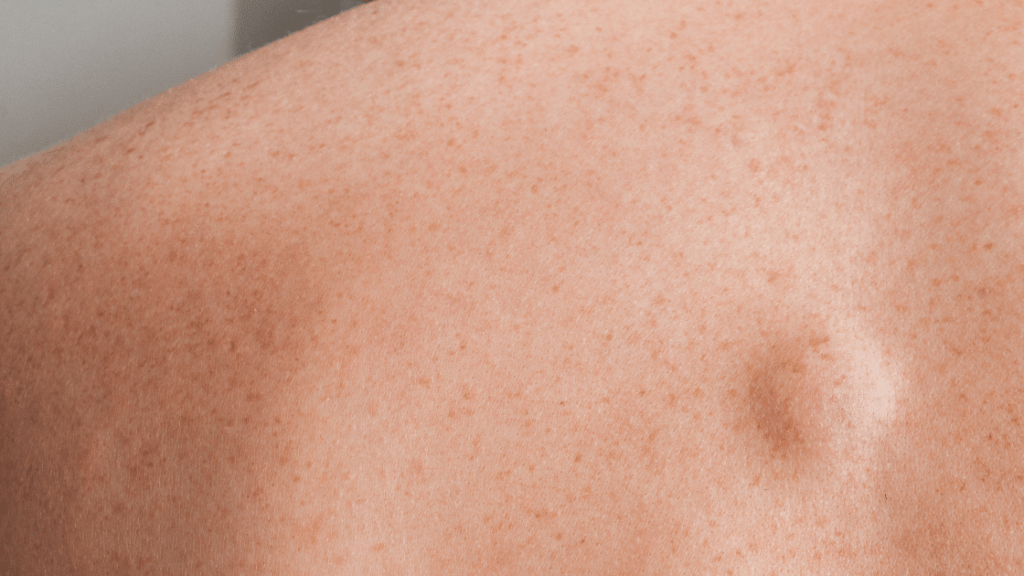Lipomas, while generally benign and non-threatening, can cause cosmetic concerns or discomfort, making effective treatment important for many individuals. To achieve the best results in managing Lipoma Treatment in Dubai, it’s crucial to follow expert advice and carefully consider your treatment options. Here are some key tips for optimal results:
1. Seek Professional Evaluation
1.1. Accurate Diagnosis
- Consult a Specialist: Start by consulting a healthcare provider or a dermatologist who can accurately diagnose the lipoma. This involves a physical examination and may include imaging studies or a biopsy to confirm that the growth is benign.
- Understand the Nature of the Lipoma: Knowing whether the lipoma is simple or complex (e.g., if it’s deeply located or has unusual characteristics) will guide the choice of treatment.

1.2. Explore Treatment Options
- Discuss All Options: Have a thorough discussion with your healthcare provider about all available treatment methods, including surgical excision, liposuction, laser treatment, cryolipolysis, and steroid injections.
- Consider Your Preferences: Weigh the pros and cons of each method based on factors such as invasiveness, recovery time, potential scarring, and effectiveness.
2. Choose the Right Treatment for Your Case
2.1. Surgical Excision
- Complete Removal: For definitive results, surgical excision is often the preferred method as it removes the entire lipoma along with a margin of surrounding tissue. This reduces the likelihood of recurrence.
- Preparation and Aftercare: Follow all pre-surgery instructions, such as avoiding blood thinners and managing any pre-existing conditions. Post-surgery, adhere to wound care instructions to promote healing and minimize scarring.
2.2. Liposuction
- Less Invasive: Liposuction is a minimally invasive technique suitable for smaller lipomas. It involves using a thin tube to remove fatty tissue and often results in less visible scarring.
- Follow-Up Care: Manage post-procedure swelling and bruising by following aftercare guidelines, including wearing compression garments if recommended.
2.3. Laser Treatment
- Precision and Minimal Scarring: Laser treatment offers precise targeting of the lipoma tissue with minimal scarring. It is typically used for superficial lipomas.
- Recovery: Expect a quick recovery with minimal downtime. Follow any specific aftercare instructions provided to optimize results.
2.4. Cryolipolysis (CoolSculpting)
- Non-Surgical Approach: This method uses controlled cooling to freeze and destroy fat cells. It is suitable for small to moderate lipomas.
- Multiple Sessions: Several sessions may be required for optimal results. Post-treatment, follow guidelines for skin care and observe for any changes.
2.5. Steroid Injections
- Reduction in Size: Steroid injections can reduce the size of the lipoma, though they typically do not remove it completely. This method is often used to manage symptoms and shrink the lipoma.
- Repeated Treatments: Multiple injections might be necessary, and monitoring by your healthcare provider will help assess the effectiveness.
3. Post-Treatment Care
3.1. Adhere to Care Instructions
- Follow-Up Appointments: Attend all scheduled follow-up appointments to ensure proper healing and to address any concerns that may arise post-treatment.
- Wound Care: Keep the treatment area clean and dry. Apply any prescribed ointments and avoid strenuous activities that could interfere with healing.
3.2. Manage Discomfort
- Pain Management: Use over-the-counter pain relievers as recommended or prescribed. Applying ice packs to the treated area can also help reduce swelling and discomfort.
- Monitor for Complications: Watch for signs of infection, such as increased redness, swelling, or pus, and contact your healthcare provider if these occur.
3.3. Lifestyle Adjustments
- Healthy Habits: Maintain a balanced diet and regular exercise routine to support overall health and recovery. While these lifestyle changes may not directly impact lipoma treatment, they contribute to general well-being.
- Avoiding Smoking and Alcohol: These habits can impair healing, so it’s advisable to avoid smoking and limit alcohol consumption during recovery.
4. Long-Term Monitoring and Care
4.1. Observe for Recurrence
- Regular Self-Exams: Continue to monitor the treated area for any new growths or changes. Regular self-exams can help detect any recurrence early.
- Consult Your Provider: If you notice any unusual symptoms or a new lump forming, consult your healthcare provider promptly.
4.2. Emotional and Psychological Well-Being
- Address Cosmetic Concerns: If the appearance of the treated area affects your self-esteem, consider discussing cosmetic procedures or counseling options with your healthcare provider.
- Seek Support: Engage with support groups or online communities for individuals who have undergone similar treatments. Sharing experiences can provide comfort and practical advice.
5. Explore New and Emerging Treatments
5.1. Stay Informed
- Research Innovations: Stay updated on new advancements and emerging treatments in lipoma management. Techniques and technologies are continually evolving, which may offer new options for treatment.
- Consult Experts: Regularly consult with healthcare professionals who are knowledgeable about the latest developments in lipoma treatment.
5.2. Personalized Care
- Tailor Treatment Plans: Work with your healthcare provider to tailor treatment plans to your specific needs and preferences, considering factors like lipoma characteristics and personal goals.
- Review Options Regularly: Reevaluate treatment options periodically to ensure that you are receiving the most effective and appropriate care for your condition.
Conclusion
Achieving the best results in lipoma treatment involves a comprehensive approach, from accurate diagnosis and selecting the right treatment to diligent post-care and long-term monitoring. By following expert tips and working closely with your healthcare provider, you can effectively manage and treat lipomas, ensuring optimal outcomes and enhanced quality of life. Whether you opt for surgical excision, liposuction, laser treatment, cryolipolysis, or steroid injections, informed decisions and proper care are key to successful management of lipomas.